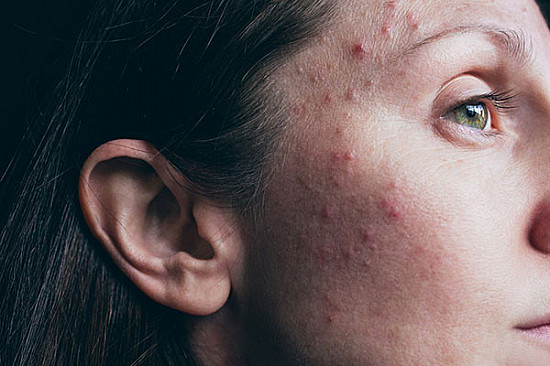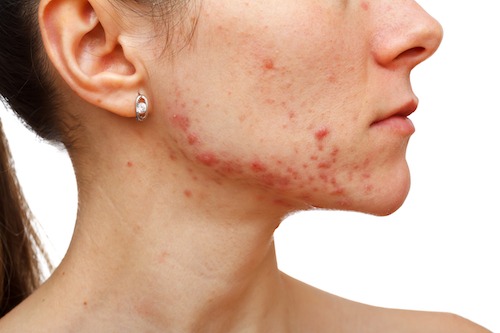Most skin problem for women in the U.S.
Atopic dermatitis, commonly known as eczema, is a chronic inflammatory skin condition that causes itchy, dry, red, and flaky patches on the skin.
11/8/20253 min read


Acne vulgaris (acne)
Why it stands out:
Acne is described as “the most common skin condition in the United States, affecting up to 50 million Americans annually.”
According to a survey, among skin-concerns for women: 26% of women (vs 20% of men) list acne as a concern.
While wrinkles and ageing signs are also top concerns, acne remains a key searched-for issue (especially younger women) and a common reason for dermatology visits.
Key characteristics in women:
Adult women often experience hormonal acne (around menstrual cycle, pregnancy, etc).
Acne in women can appear on the face, but also on neck, chest, shoulders, back.
Since many women have skincare routines and are more attuned to skin changes, the concern and search volume is heightened.
Bottom line: If you’re looking for the most searched skin problem by women in the U.S., acne is a strong candidate (especially when combined with “sensitivity/skin concerns”).


2. Organic / natural remedies & lifestyle approaches
Natural approaches that may assist (but always with caution & realistic expectations)
Here are some organic or “natural” remedy options, backed to varying degrees by evidence. They are supplementary, not always adequate as standalone treatments—especially for moderate/severe acne.
A. Topical natural remedies
Aloe vera gel: Has anti-inflammatory and antibacterial properties; may help calm redness and irritation.
Tea tree oil: Some studies show it can reduce acne lesions (though needs to be diluted and used with caution).
Camellia sinensis (Green tea) extract or topical: Some evidence it may reduce sebum, bacterial growth and inflammation.
Curcuma longa (Turmeric) / curcumin: Anti-inflammatory/antioxidant; some lab evidence for acne but human data still weak.
Organic oils (non-comedogenic) e.g., jojoba oil or argan oil: Can help balance oily/dry skin; some small studies for acne.
B. Diet / lifestyle / internal support
Low-glycemic diet: High GI foods may trigger insulin/IGF-1, which can stimulate sebum production and acne flares.
Reduce dairy / skim milk (some correlations with acne).
Manage stress: Stress → hormonal shifts → oil production → acne.
Good skincare hygiene: Use non-comedogenic products, avoid heavy oils, make sure to cleanse gently.
C. Sample simple home remedy
You might try, for example:
Cleanse face gently twice a day (morning + night) with a mild non-comedogenic cleanser.
After cleansing and drying, apply a thin layer of pure aloe vera gel (patch test first).
1–2 times/week apply a green tea mask: Brew green tea, let cool, apply to skin, leave 10-15 minutes, rinse.
Keep diet moderate GI; reduce sugary snacks, limit dairy (especially skim milk).
Avoid picking/popping pimples. Use tea tree oil (diluted) as a spot-treatment for a visible pimple (patch test first).
Ensure adequate sleep & stress reduction (e.g., 30 min walk, meditation).
D. Important caveats
Natural ≠ risk-free: Some “organic” products can still irritate skin or cause allergic contact dermatitis.
Most home/natural remedies have limited robust clinical trials; they may help mild acne or as adjuncts, but not always sufficient for moderate/severe acne.
If acne is deep, cystic, scarring or persistent: see a dermatologist—professional treatments may be needed.
Patch-test any new topical remedy (especially essential oils).
For “organic”/natural — check ingredient lists, purity, avoid heavy oils/comedogenic ingredients.
3. Why this matters and how you (or women in general) can apply it
Since you have a business interest (coffee bean roasting/import etc) and perhaps also in skin/beauty insights:
If you’re creating content (e.g., tutorial videos) around skincare or women’s concerns, acne is a key topic that many women search for.
If you’re developing skincare or wellness product ideas (even imported organic/natural ones), focusing on formulations that help acne-prone skin (especially for women) could be a strong niche.
When giving advice or curating content/products: emphasise a holistic approach—topical + lifestyle + diet + stress management—not just “apply this cream” simplistically.
Given your interest in business importation: sourcing high-quality natural ingredients (aloe vera, green tea extracts, non-comedogenic oils) could align with this skin-problem demand.
